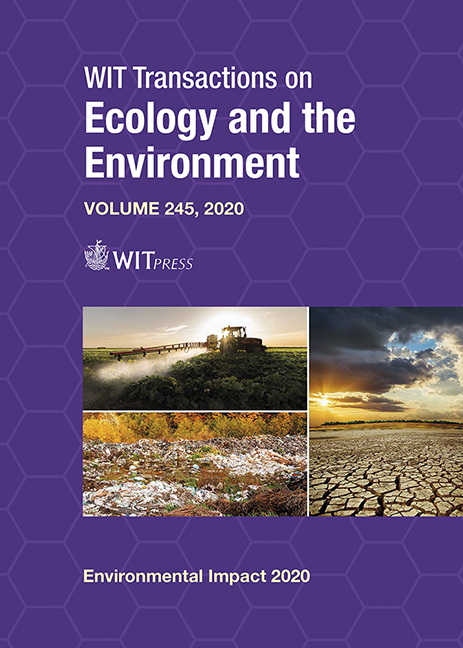LYAPUNOV FUNCTIONS AS THE DIVERGENCE FUNCTIONS FOR ENVIRONMENTAL ASSESSMENT: THEORETICAL BACKGROUND
Author(s)
YURI A. PYKH, IRINA G. MALKINA-PYKH
Abstract
Measures of divergence between two points that measure their discrepancy play a key role in many environmental problems. So, it has a great importance for more constructive and progressive approaches to ensure sustainability. In particular, for two probability distributions p and q, one can define a set of various divergence measures D[p ∥ q]. A divergence is not necessarily symmetric, that is, the relation D[p ∥ q] = D[q ∥ p] does not generally exist, nor does it satisfy the triangular inequality. Usually the divergence function D[p ∥ q] satisfies the following conditions: (1) D[p ∥ q]≥0, (2) D[p ∥ q] = 0 when and only when p = q. Recall that, the information geometry originated from the geometric study of the manifold of probability distribution, has been successfully applied to many fields of environmental assessment. It is well known from Amari’s investigations that divergence function induced the information geometry and endowed it by Riemannian metric. On the other hand, Lyapunov—Meyer function for the special class of replicator system is the relative entropy function or the function of information divergence. Based on “The fundamental theorem of dynamical systems” by Conley and recent results of Barta et al. “Every ordinary differential equation with a strict Lyapunov function is a gradient system” we receive the Riemannian metric for dynamical pairwise systems on standard simplex and give for it a new example of divergence for different environmental problems.
Keywords
nonlinear pairwise interactions, replicator dynamics, Lyapunov—Meyer functions, distance measure, divergence, environmental assessment






